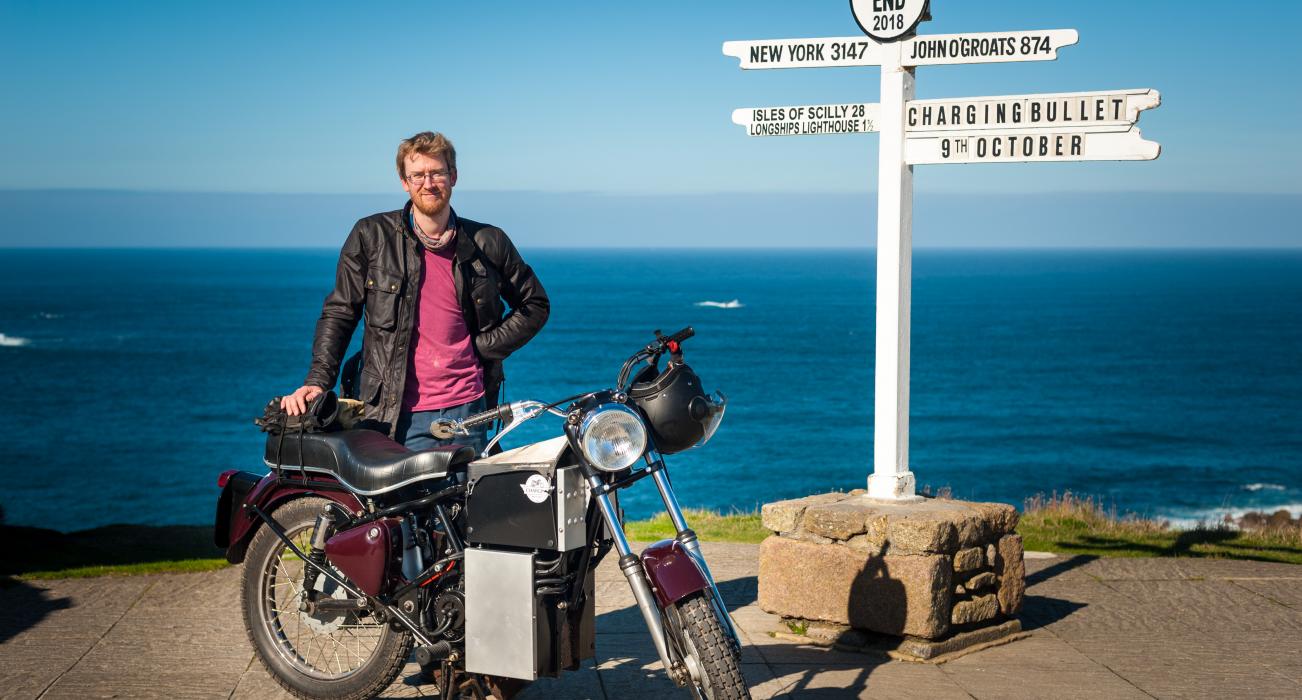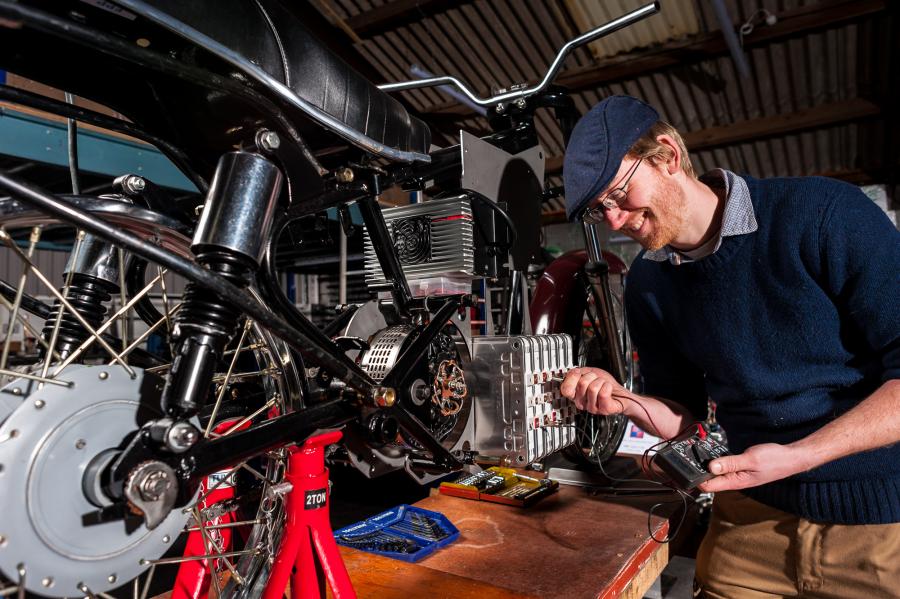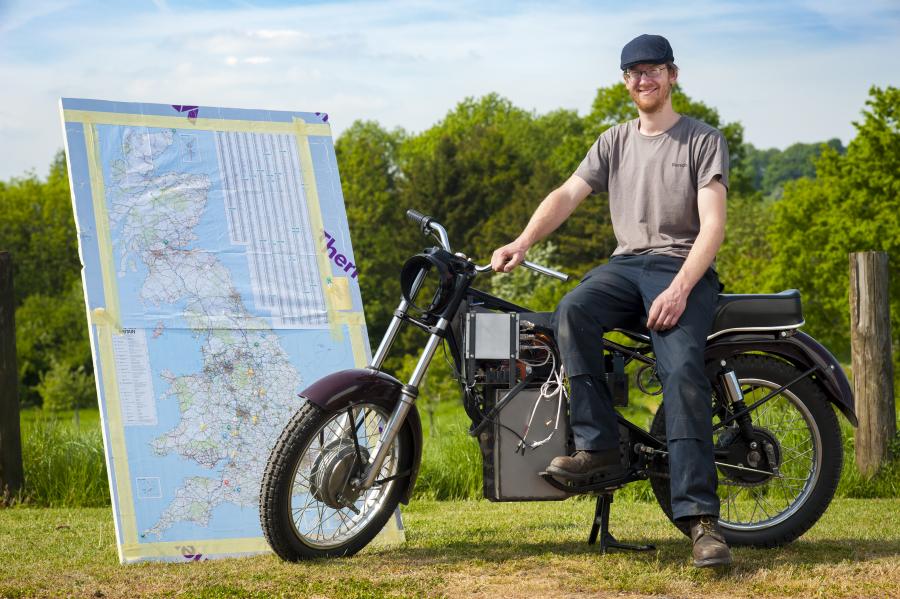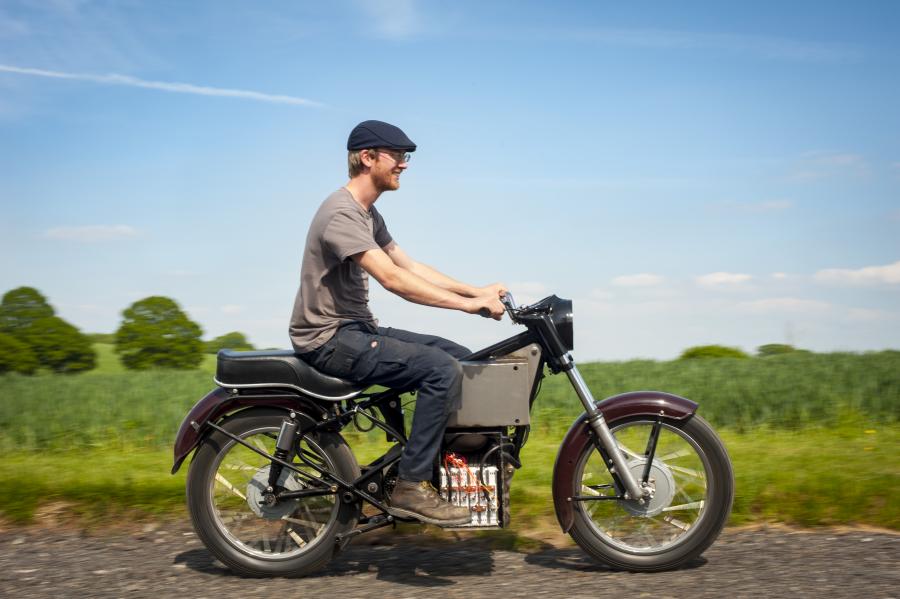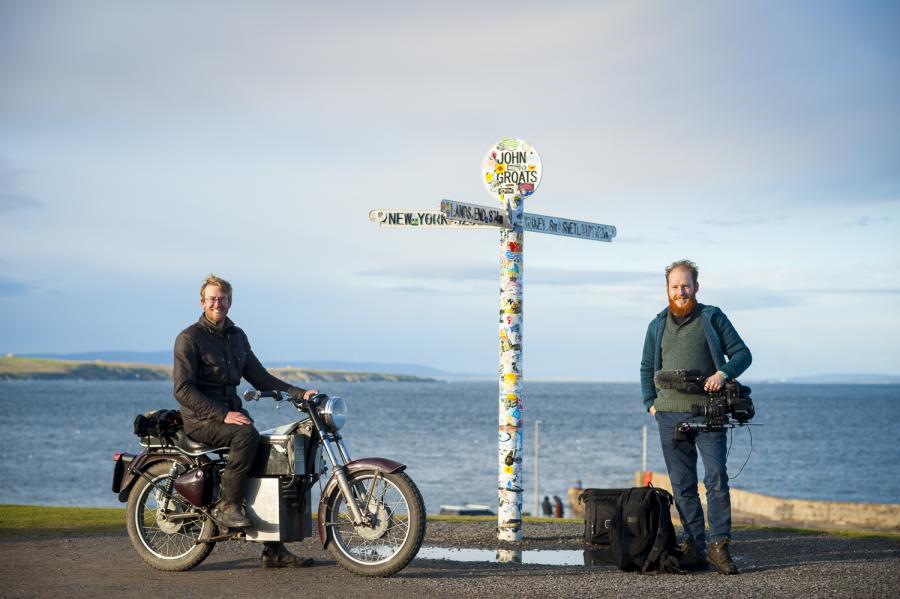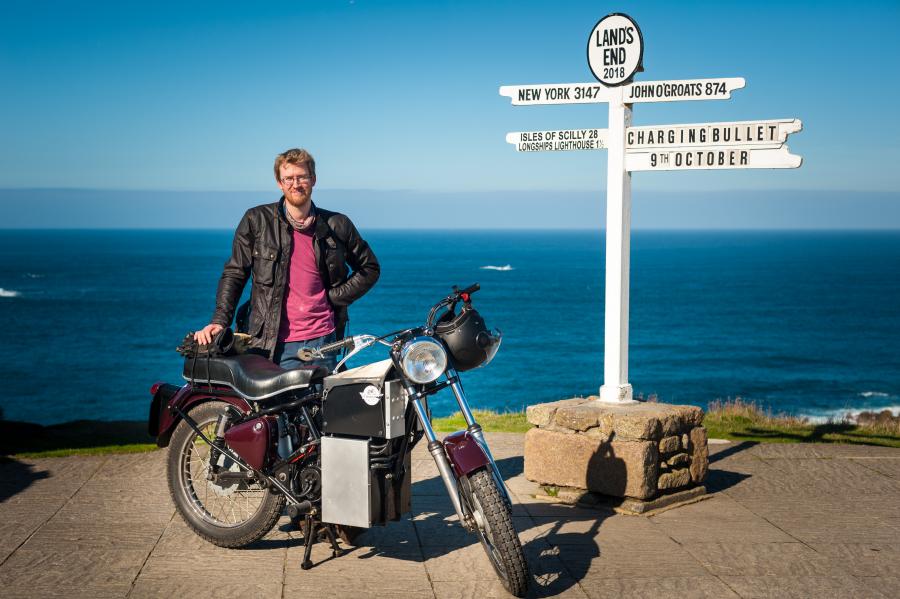Land’s End to John o’Groats Astride a Charging Bullet
To many people, however, they seem a newfangled and scary idea with range anxiety, high purchase prices and rumours of short battery life still putting off most motorists. As an engineer with a strong environmental concern, I decided to dip my toe into the world of battery vehicles and was pleasantly surprised by what I found.
For many years my profession has been restoring historic sports and racing cars and I have recently expanded into classic motorcycles (a particular passion of mine), so it seemed fun to try something a little unusual: building an electric motorbike. A part-restored 1961 350cc Royal Enfield “Bullet” would prove to be the perfect donor bike, providing the frame and cycle parts. Batteries came from a flood-damaged Nissan Leaf with the motor and various electronics sourced from specialists around the globe. The bike would never test the limits of its 50-mile range on my daily commute so for a real challenge I could think of nothing better than the longest route in Britain: Land’s End to John o’Groats. All this would be done under the watchful lens of independent filmmaker Finn Varney, who would use the narrative of the journey to construct a documentary about the sustainable transport revolution unfolding across the UK.
The bike, and the plan came together through 2018 and we set off in early October with a tight filming schedule and a barely tested but wittily christened “Charging Bullet”. The sun shone as we worked our way up the country visiting biogas buses in Bristol, hydrogen cars near Hereford and the University of Bristol’s world-beating battery race bike. It was hard work filming and riding every day, but the brand new Charging Bullet performed faultlessly as we worked our way North. Soon, however, the weather started to close in and an unexpected icy patch caught me unawares in the Peak District. Rider and bike were thankfully unhurt and we carried on with gritted teeth. From there autumn turned to winter and our attempt on the Highlands was cut off by early snow, forcing us to detour around the lower, warmer coast roads. Finally, north of the Moray Firth, the sun shone again as I rode down into John o’Groats Harbour to share a celebratory snifter of Scotch with Finn, gazing out over the Orkneys. We had done it: 1,500 miles on an electric motorcycle designed simply to get me to work, and over 50 hours of footage in the bag.
So what do I think of battery biking? I’m converted. Riding without the noise and fuss of a petrol engine is like the very distilled essence of motorcycling, besides the obvious environmental benefits. The Charging Bullet may not have been designed for touring but it was a fantastic way to explore the British Isles, and is now working perfectly in its intended role, ferrying me along the beautiful back lanes of Herefordshire. Back at work, Spaven Engineering is now specialising in the design and manufacture of one-off electric motorcycles, alongside the more conventional classic restorations. And the documentary? It’s in post-production, whittling those hours of raw footage down to 60 minutes of finished film with release planned for summer 2019.
To find out more about the adventure, the bike and where you can watch the film, check out: www.Charging-Bullet.co.uk
By Mr Fred Spaven (2006)
This article first appeared in Magdalene Matters Issue 49
